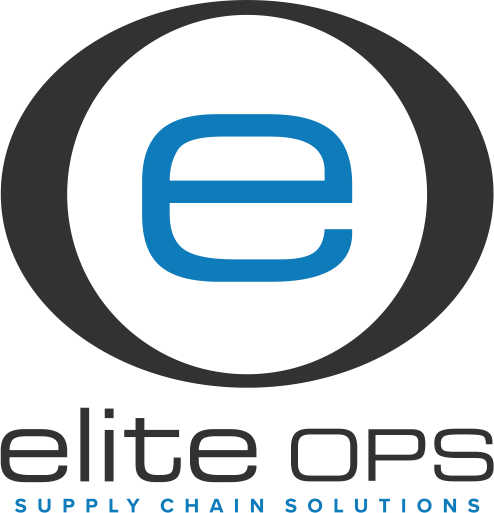Kitting and Assembly: What’s the Difference and Why Does It Matter?
Kitting and Assembly: What’s the Difference and Why Does It Matter?
Supply chain management requires accuracy, effectiveness, and strategic decision-making. Two important processes – kitting and assembly – have different functions in today’s logistics operations, but they are often misunderstood or used interchangeably.
Imagine you’re getting a new toy. Sometimes, all the parts come in a single box, ready for you to start building—that’s like kitting. Other times, the toy is already built and ready to play with—that’s like assembly.
In business, kitting and assembly are similar ideas, but many people mix them up. Knowing the difference can help companies save time, cut costs, and work more smoothly.
In this blog, we’ll break down what kitting and assembly mean, how they’re different, and why understanding this can make a big impact on your business.
Understanding Kitting
Kitting is a strategic pre-assembly process where individual components are gathered, organized, and packaged together as a single unit before shipping or assembly. This unified package, known as a “kit,” contains all necessary parts required for a specific product or purpose.
The role of kitting in logistics extends beyond simple packaging, incorporating principles of continuous improvement:
- Inventory Organization: Each kit receives a unique SKU, simplifying tracking and management.
- Quality Control: Components undergo inspection during the kitting process.
- Space Optimization: Consolidated kits require less warehouse space than individual items.
- Streamlined Operations: Pre-packed kits reduce picking time and minimize errors.
Kitting serves diverse industries with specific applications:
Manufacturing
- Auto parts bundled for specific vehicle models.
- Electronics components grouped for circuit board assembly.
Retail
- Subscription boxes with curated products.
- Gift sets combining multiple items.
- Product bundles for promotional campaigns.
Healthcare
- Medical supply kits for specific procedures.
- First aid kits with essential components.
- Diagnostic test kits with required materials.
Education
- Science lab kits for experiments.
- Art supply sets for specific projects.
- Training materials packaged with necessary tools.
The kitting process adapts to each industry’s unique requirements, incorporating specialized packaging, labeling, and quality control measures. Companies like Elite OPS customize kitting solutions to offer custom solutions based on product specifications, handling requirements, and end-user needs.
Benefits of Kitting
Kitting offers significant advantages for businesses looking to improve their supply chain operations. By strategically grouping related items together, kitting creates a positive impact on multiple areas of the business.
1. Streamlined Order Fulfillment
Kitting significantly streamlines the order fulfillment process by reducing picking time with pre-assembled kits, minimizing order processing errors, and speeding up shipping preparation. Simplified quality control checks further enhance efficiency. These benefits align with the broader trend towards streamlined eCommerce supply chain operations, which many businesses are adopting to improve service delivery.
2. Cost-Effective Operations
Kitting offers substantial cost savings across various operational areas. It lowers labor costs by reducing handling time and decreases shipping expenses through consolidated packages. Additionally, it reduces packaging material usage and optimizes warehouse space utilization, making it a cost-effective strategy for businesses.
3. Enhanced Inventory Management
Implementing kitting transforms inventory control by enabling single SKU tracking for multiple components, simplifying stock level monitoring, and reducing storage space requirements. This approach also improves forecasting accuracy for component needs, enhancing overall inventory management efficiency.
4. Time-Saving Benefits
Kitting accelerates operational processes by enabling quick order processing and reducing assembly time during fulfillment. It also facilitates faster training for new warehouse staff and streamlines quality inspection procedures, contributing to significant time savings across the board.
5. SKU Consolidation Advantages
Converting multiple individual SKUs into single kit SKUs simplifies inventory tracking and reduces picking errors. This consolidation enhances accuracy in stock counts and improves warehouse organization, making kitting an attractive solution for businesses managing complex product combinations or high-volume orders.
These benefits make kitting an attractive solution for businesses dealing with complex product combinations or high-volume orders. The systematic approach to component organization translates into tangible improvements in operational efficiency and cost management.
Kitting Process Overview
The kitting process follows a systematic workflow designed to maximize efficiency and accuracy. Here’s a detailed breakdown of each stage:
1. Component Reception
The component reception phase involves receiving and logging individual items as they arrive. This step is crucial for maintaining accurate records and ensuring that all necessary parts are accounted for. A quality inspection follows, where each component is checked for defects or discrepancies to ensure they meet the required standards. Once verified, the inventory management system is updated to reflect the new stock levels, ensuring seamless tracking and availability for the assembly process.
2. Pre-Assembly Organization
During pre-assembly organization, components are sorted according to kit requirements, ensuring that each kit has the correct parts. This step includes verifying component quantities to prevent shortages or excesses during assembly. Materials are then staged in designated areas, ready for efficient access and use in the assembly line. This organized approach streamlines the subsequent assembly process, reducing delays and enhancing productivity.
3. Kit Assembly
The assembly process is carefully structured to ensure efficiency and quality, starting with the placement of items in designated containers for organized access. Components are then added sequentially, maintaining the correct order to preserve the product’s integrity. Quality control checkpoints are strategically placed throughout the process to monitor and verify each stage, promptly addressing any issues. This approach ensures that the final product meets high standards of quality and reliability, streamlining the assembly process and enhancing the overall product delivered to customers.
Protective Packaging Solutions
Different kit types require specific packaging approaches:
- Bubble wrap: Ideal for fragile components.
- Custom foam inserts: Perfect for electronics and precision items.
- Anti-static bags: Essential for electronic components.
- Vacuum sealing: Used for moisture-sensitive items.
- Corrugated dividers: Prevents component mixing.
Value-Added Elements
Strategic Inclusion of Promotional Materials Enhances Kit Value
- Product Documentation
- Warranty Cards
- Brand Stickers
- Discount Vouchers
- Installation Guides
- QR Codes Linking to Digital Content
Incorporating these elements not only boosts the kit’s value but also strengthens customer engagement and loyalty.
The kitting process integrates quality control at each stage, ensuring every kit meets exact specifications. Modern kitting facilities use barcode scanning, digital verification systems, and efficient shipping services to maintain accuracy throughout the process. These technological implementations help track components, verify kit contents, and maintain detailed assembly records, all contributing to continuous improvement in the kitting process by offering custom solutions tailored to meet specific needs.

Understanding Assembly
Assembly is a crucial manufacturing process where individual parts are systematically combined to create a complete, functional product. This process takes separate components and turns them into finished goods through specific sequences of operations, requiring precision and attention to detail.
Key Elements of Assembly:
- Sequential Integration: Parts are joined together in a predetermined order.
- Quality Control: Each step involves verification of proper component fit.
- Specialized Tools: Specific equipment needed for different assembly types.
- Technical Documentation: Detailed instructions guide the process.
Assembly is essential in various industries, including automotive manufacturing and electronics production. For example, in a car assembly line, thousands of parts—such as engine components and interior fixtures—are connected to create a fully operational vehicle.
The difference between assembly and kitting lies in their main goals: assembly creates functional products by integrating components, while kitting focuses on grouping related items without necessarily joining them together.
Think about a computer manufacturer: The assembly process involves physically connecting the motherboard, CPU, RAM, and other components to create a working system. This is different from kitting, where these same components might be packaged together but remain separate items.
Assembly Requirements:
Technical expertise in component integration is crucial for ensuring that all parts fit together seamlessly to create a functional product. This requires a deep understanding of product specifications, which guide the assembly process and ensure that the final product meets design and performance standards. Knowledge of safety protocols is equally important, as it helps prevent accidents and ensures that the assembly process adheres to industry regulations.
Additionally, the ability to follow detailed assembly instructions is essential for maintaining consistency and quality across production runs. This combination of skills ensures that the assembly process is efficient, safe, and capable of producing high-quality products that meet customer expectations.
Assembly processes have a direct impact on product quality, functionality, and safety. When a product is assembled correctly, all its components work together as intended, meeting performance specifications and safety standards. This makes assembly a critical step in manufacturing that determines the reliability and effectiveness of the final product.
Benefits of Assembly
Assembly processes offer significant benefits that directly affect product quality and operational efficiency. When done correctly, an assembly operation brings together various parts in a systematic way to create products that meet specific requirements and quality standards.
Quality Enhancement Benefits:
- Precise component alignment and fitment verification.
- Real-time quality checks at each assembly stage.
- Immediate identification and correction of defects.
- Consistent product performance across production runs.
- Enhanced product durability through proper component integration.
The organized nature of assembly operations leads to significant improvements in efficiency throughout manufacturing processes. Modern assembly lines use lean principles and quality control measures to streamline production flow.
Efficiency Gains Through Assembly:
Assembly processes significantly enhance manufacturing efficiency by reducing production cycle times and minimizing material waste. This efficiency is achieved through lower rework requirements and standardized processes that ensure consistent output. Improved resource utilization is another key benefit, allowing manufacturers to maximize their operational capabilities.
By implementing specialized quality control measures at each stage of production, manufacturers can conduct component testing before integration, perform functional verification during assembly, and carry out final product testing and validation. This systematic approach also includes the documentation of quality metrics and ensures traceability of components and processes, which is crucial for maintaining high standards.
The introduction of automated assembly systems further amplifies these advantages by enabling precise repetition of assembly steps, digital quality monitoring, and data collection for process optimization. These systems reduce human error and increase production speed, making them invaluable for modern manufacturing environments seeking to maintain a competitive edge.
Companies that invest in improved assembly processes often see noticeable improvements in both product quality and operational performance. These enhancements lead to greater customer satisfaction and stronger competitiveness in the market.
Need for Specialized Labor and Machinery in Assembly
Assembly operations demand specific expertise and sophisticated equipment to maintain quality standards and operational efficiency. The complexity of modern manufacturing necessitates skilled professionals who understand intricate assembly processes.
Key Requirements for Assembly Operations:
Technical Expertise
- Advanced knowledge of mechanical systems.
- Understanding of quality control protocols.
- Ability to interpret technical drawings and specifications.
- Proficiency in using specialized tools and equipment.
Specialized Equipment
- Automated assembly lines.
- Precision measurement tools.
- Quality testing equipment.
- Custom jigs and fixtures.
The automotive industry exemplifies these requirements. Vehicle assembly involves complex robotic systems working alongside skilled technicians. These professionals must understand electrical systems, mechanical components, and safety protocols while operating sophisticated machinery.
Electronics manufacturing presents similar demands. Circuit board assembly requires:
- Microscopic soldering equipment.
- Component placement machines.
- Testing apparatus.
- ESD (Electrostatic Discharge) protection systems.
- Thermal management tools.
The medical device industry demonstrates how specialized labor and machinery intersect. Clean room environments demand workers trained in sterile procedures, using precision instruments for assembling life-critical devices.
Elite OPS recognizes these industry-specific needs by maintaining a skilled workforce, emphasizing continuous improvement, and investing in advanced assembly equipment. Their facility houses state-of-the-art machinery operated by trained professionals who understand the nuances of various assembly requirements across different sectors.

Key Differences Between Kitting and Assembly
Understanding the distinct characteristics of kitting and assembly helps businesses make informed decisions about their operations. Here’s a detailed comparison table of these two processes:
| Aspect | Kitting | Assembly |
|---|---|---|
| Primary Purpose | Grouping related items into a single unit for shipping or storage | Creating finished products by combining components |
| End Result | Kit of separate, ready-to-use items | Single, functional product |
| Complexity | Low to medium complexity | Medium to high complexity |
| Skill Requirements | Basic packaging and organization skills | Specialized technical skills and training |
| Equipment Needs | Basic packaging tools and materials | Specialized machinery and technical equipment |
| Quality Control | Focus on accurate item selection and packaging | Focus on product functionality and performance |
| Time Investment | Relatively quick process | Longer process with multiple stages |
| Cost Structure | Lower equipment and labor costs | Higher investment in tools and skilled labor |
| Flexibility | Easily adaptable to changing requirements | Less flexible due to specific product specifications |
| Inventory Management | Simplified tracking through single SKU | Multiple component tracking required |
The choice between kitting and assembly depends on specific business needs. Kitting works best for subscription boxes, promotional packages, or component sets. Assembly suits manufacturing environments where individual parts create a new, functional product.
These processes serve different purposes in the supply chain:
- Kitting: Streamlines distribution and simplifies inventory management.
- Assembly: Focuses on product creation and quality control.
Some businesses benefit from implementing both processes at different stages of their operations.
Why Understanding These Differences Matters for Businesses
Supply chain optimization strategies require businesses to make informed decisions about their operational processes. A deep understanding of kitting versus assembly enables companies to:
Reduce Operational Costs
Reducing operational costs is crucial for optimizing supply chain processes. By aligning processes with specific product requirements, businesses can minimize unnecessary labor expenses and enhance productivity. Efficient warehouse space utilization further contributes to cost savings, improving the flow of goods and creating a leaner operation.
Enhance Market Competitiveness
To thrive in a dynamic marketplace, enhancing market competitiveness is essential. Speeding up order fulfillment directly impacts customer satisfaction, fostering loyalty and setting a business apart. Maintaining high product quality standards is equally vital, reinforcing the brand’s reputation and driving long-term success.
Scale Operations Effectively
Effective scaling is key for growth and adaptation to market changes. Businesses must adapt to seasonal demand fluctuations and manage product line expansions efficiently. Efficient inventory management ensures optimal stock levels, reducing the risk of overstocking or stockouts and supporting sustainable growth.
Your business type and product characteristics are crucial in determining the right approach.
Product Complexity
Product complexity influences the choice between kitting and assembly. Simple products may benefit from kitting, streamlining packaging and distribution. Complex items often require assembly expertise to ensure proper integration and functionality. Understanding product complexity is essential for selecting the most efficient process.
Order Volume
Order volume plays a critical role in deciding between kitting and assembly. High-volume operations might justify automated assembly systems, enhancing efficiency and reducing labor costs. Low-volume needs could make kitting more cost-effective, requiring less investment in specialized equipment and labor.
Resource Availability
Resource availability, including warehouse space, skilled labor, and equipment investment capacity, is vital in determining the appropriate approach. Adequate space and skilled labor are essential for executing tasks, while investment capacity influences the choice between manual and automated processes. Assessing these resources ensures sustainable strategies.
Companies that accurately assess their needs can implement the right mix of kitting and assembly processes. This strategic decision impacts:
- Supply chain flexibility
- Production lead times
- Quality control measures
- Storage requirements
- Labor allocation
A precise understanding of these differences helps businesses create streamlined workflows, reduce bottlenecks, and maintain competitive advantages in their respective markets. However, it’s not without its challenges.
An external fulfillment service partner like Elite OPS is responsible for picking, packing, and shipping orders. Consider such a strategy to reduce shipping and operational costs.
Elite OPS has been a leader in Shipping and Logistics for over 25 years. Contact Us to find out how we can help you Save Time and Money on Procurement as a Service, eCommerce Order Fulfillment, and Kitting and Assembly.
Call 855-553-5490 or Click Here to Request a Quote!
Kitting and Assembly FAQs (Frequently Asked Questions)
What are the benefits of kitting in supply chain management?
Kitting streamlines shipping processes, saves costs, and improves inventory management by consolidating SKUs. It also enhances overall efficiency and provides time-saving advantages for businesses.
How does the assembly process impact product quality?
The assembly process ensures proper fitment and functionality of components, which enhances product quality. Well-designed assembly processes can also lead to efficiency improvements such as reduced cycle times and minimized rework.
Why is specialized labor important in the assembly process?
Certain types of assembly operations, like those in electronics or automotive manufacturing, require specialized labor skills and machinery/tools. This specialization helps ensure that products are assembled correctly and meet quality standards.
How can businesses benefit from outsourcing kitting and assembly to Elite OPS?
Outsourcing to Elite OPS allows businesses to gain advantages such as cost-effectiveness, scalability, and access to customized kitting, shipping services, custom solutions, and assembly services tailored specifically for eCommerce fulfillment needs.
What real-world examples illustrate the use of kitting or assembly in logistics?
Companies like Amazon have successfully leveraged kitting and assembly as part of their logistics strategy. These real-world applications demonstrate how understanding these processes can lead to optimized supply chains with improved efficiency levels.








